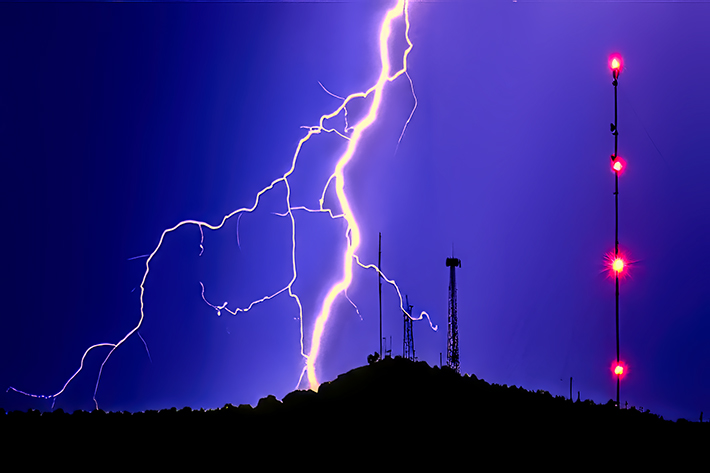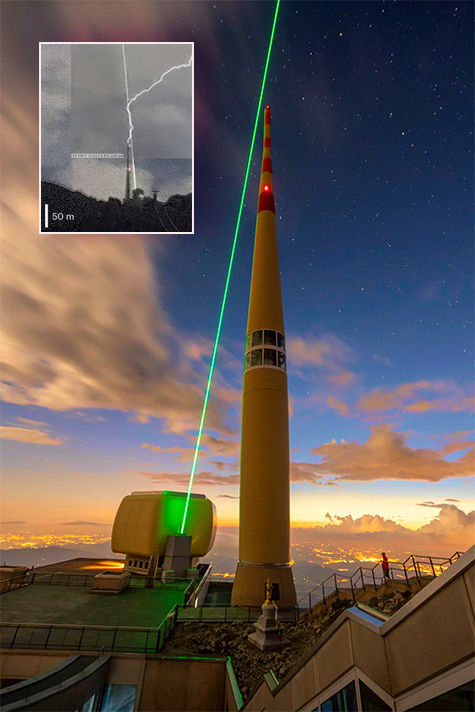
BYE, BYE BEN FRANKLIN, BUT NOT FOR SOME TIME – Scientists have discovered a way to use a laser beam to change the course of lightning, keeping it from striking a communications tower that is hit by lightning at least 100 times a year, but it could take years to perfect their system to make it economically feasible.
Scientists have developed a rapidly firing laser that can divert lighting strikes to prevent infrastructure damage. Its effectiveness was shown when it was tested using a 407-foot communications tower on top of Säntis mountain in northeastern Switzerland, a structure in the Swiss Alps that is struck by lightning about 100 times a year.

The inset photo shows how a laser successfully rerouted lightning to its path. The experiment took place at this 407-foot tower site in the Swiss Alps.
The Cliff Notes of their success is when high-power laser pulses are emitted into the atmosphere, filaments of very intense light form inside the beam. These filaments ionize the molecules of nitrogen and oxygen present in the air, which then release free electrons to move. This ionized air, called “plasma,” becomes an electrical conductor, and the lightning will follow the laser’s path.
However, towerco risk management directors will not have to assess for quite some time whether a laser is an alternative for a grounding system at their vulnerable sites, such as Mount Sutro in San Francisco.
Two concerns keep lasers from replacing a tower’s Benjamin Franklin rod. The Santis laser costs $2 million, and the FAA might have some serious objections.
During the Säntis experiment, the researchers worked with aviation authorities to designate a no-fly zone around the tower.
It could work, however, if the scientists could adjust the laser’s wavelength and power.
The researchers, during the summer of 2021, observed 16 lightning strikes at Säntis—four of which occurred while the laser was powered on. And in all four cases, sensors—either a high-speed camera or a high-frequency electromagnetic wave detector—captured the lightning following the beam’s path.
Before the Säntis test, an attempt was made in New Mexico in 2004. However, it failed to produce evidence of laser guiding or initiation of lightning discharges.
The laser-guided lightning study by 28 scientists is AVAILABLE HERE.
















